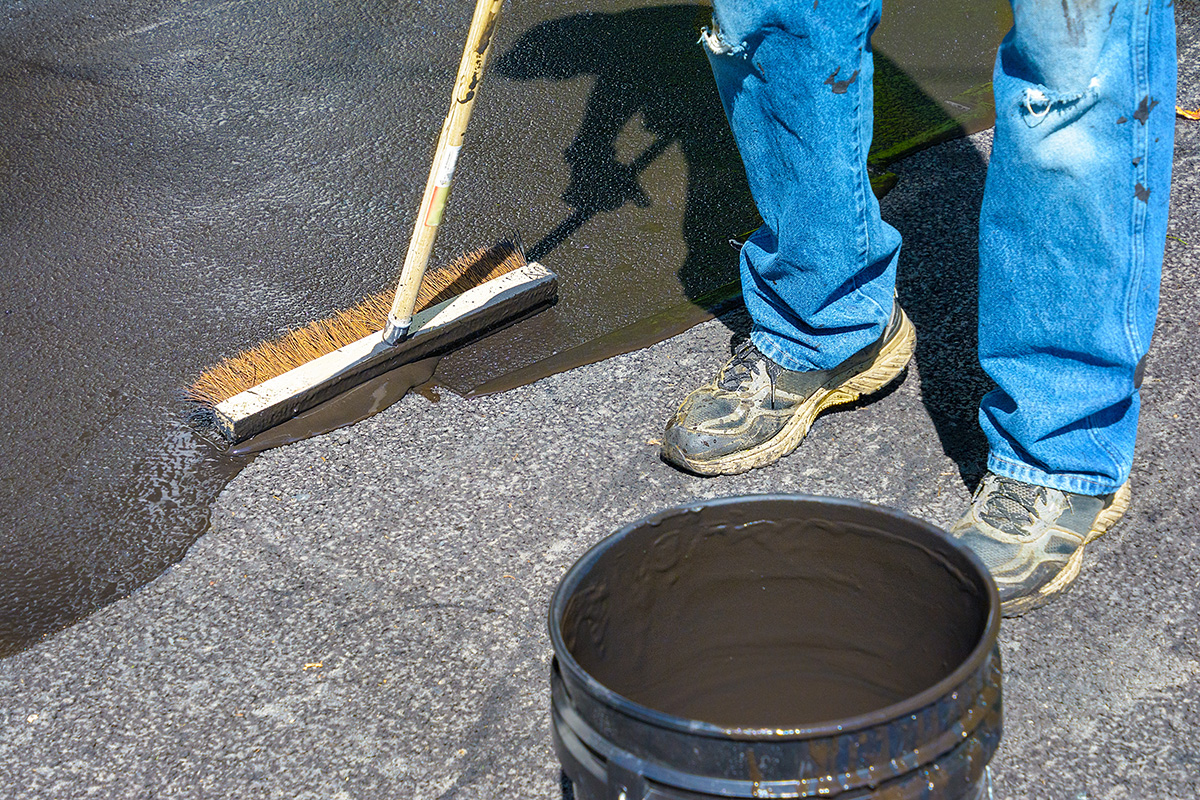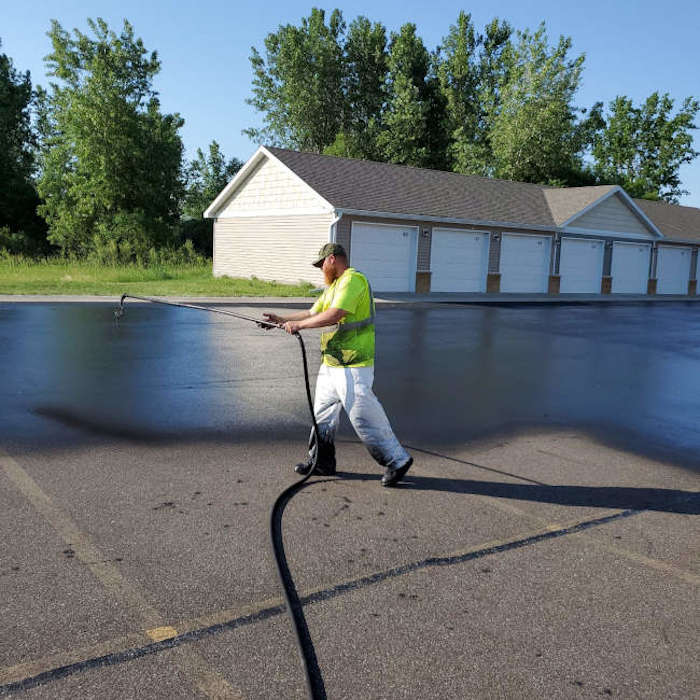Unleash the Possible: Regrading and Asphalt Sealing for Industrial Spaces
Unleash the Possible: Regrading and Asphalt Sealing for Industrial Spaces
Blog Article
Warm Mix Asphalt: A Sustainable Solution for Pavement
Hot Mix Asphalt (HMA) has actually arised as a leading sustainable option for sidewalk services, using a myriad of cutting-edge technologies and environmental benefits. As the need for environment-friendly building and construction techniques expands, exploring the subtleties of HMA's sustainability can supply important understandings into the future of sidewalk services.
Environmental Advantages of Hot Mix Asphalt

Additionally, Hot Mix Asphalt assists to minimize urban warm island effects. Its dark shade takes in sunlight, minimizing the amount of warm showed back right into the environment compared to lighter-colored pavements. This can lower ambient temperatures in metropolitan areas, decreasing the need for a/c and eventually minimizing energy intake.
On top of that, Warm Mix Asphalt adds to boosted stormwater management. Its porous nature enables water to reenergize and penetrate the pavement groundwater products, decreasing runoff and the danger of flooding. These environmental advantages make Hot Mix Asphalt a lasting selection for leading roads and freeways.
Energy Efficiency in HMA Production
Is power efficiency an essential consider the production of Warm Mix Asphalt (HMA)? Absolutely. Energy plays a considerable duty in the production of HMA, impacting both price and environmental sustainability. One crucial element of energy efficiency in HMA manufacturing is making use of cozy mix asphalt (WMA) modern technologies (commercial parking lot paving). WMA enables the blending and positioning of asphalt at reduced temperatures contrasted to standard hot mix asphalt, causing reduced energy usage during manufacturing. This process not only lowers gas usage yet likewise reduces greenhouse gas emissions, making it an extra eco friendly option.
In addition, developments in plant innovations have led to even more energy-efficient HMA manufacturing procedures. By optimizing energy usage in HMA manufacturing, the industry can decrease its carbon footprint while maintaining high-quality sidewalk products.
Recyclability of Warm Mix Asphalt
The recyclability of Warm Mix Asphalt (HMA) is a pivotal aspect of its sustainability and lasting ecological influence. HMA is among one of the most recycled materials in the United States, with over 100 million loads of redeemed asphalt pavement (RAP) being recycled each year in brand-new pavement building and construction. Recycling HMA offers numerous ecological benefits, such as minimizing the requirement for virgin materials, reducing power intake during manufacturing, and lowering the quantity of waste sent to garbage dumps.
The procedure of recycling HMA entails grating the existing sidewalk, squashing it into smaller items, and mixing it with brand-new accumulation and asphalt binder to develop a recycled mix. This recycled mix can commonly do in addition to or perhaps much better than standard HMA, while needing less basic materials and creating reduced greenhouse gas emissions. By incorporating RAP right into new sidewalk jobs, road companies can preserve natural deposits, minimize costs, and lessen the environmental impact of road building and construction and upkeep activities. Overall, the recyclability of HMA plays a substantial role in promoting lasting practices within look at here the pavement industry.

Long-Term Efficiency of HMA
Asphalt pavements demonstrate sturdiness and resilience over an extended duration, mirroring the long-term efficiency of Warm Mix Asphalt (HMA) Furthermore, developments in HMA innovation, such as the use of polymer-modified binders and warm mix asphalt, have better enhanced the durability and longevity of HMA sidewalks. By prioritizing high quality building and construction and upkeep methods, HMA continues to show itself as a cost-efficient and lasting solution for lasting sidewalk infrastructure.

HMA: Sturdiness and Sustainability
Showing both durability and sustainability, Warm Mix Asphalt (HMA) has actually become a cornerstone in the building and construction of resilient sidewalk infrastructures - angled parking. HMA's sturdiness originates from its capacity to withstand hefty loads, rough climate conditions, and high web traffic volumes, making it a reputable choice for roadways, freeways, and flight terminal paths. The composition of HMA, which commonly consists of aggregates, binder, and filler, plays an important function in boosting its longevity and resistance to tear and put on
Furthermore, HMA's sustainability lies in its recyclability and energy-efficient production process. The capacity to reuse reclaimed asphalt pavement (RAP) in new HMA combinations minimizes the need for virgin materials and lessens the ecological effect of sidewalk building and maintenance. Furthermore, the power efficiency of creating HMA exists in its reduced mixing temperature levels contrasted to other sidewalk materials, resulting in reduced power usage and greenhouse gas exhausts.
Final Thought
In final thought, hot mix asphalt (HMA) provides a lasting remedy for sidewalk with its eco-friendly characteristics. HMA's recyclability, power effectiveness in manufacturing, and lasting toughness make it an environmentally friendly option for roadway building. By saving natural resources, lowering waste, and lowering greenhouse gas emissions, HMA plays a critical role in advertising sustainability in framework advancement. Its ability to mitigate city warmth island impacts even more emphasizes its importance in creating resilient and environmentally conscious pavement systems.
HMA is one of the most recycled materials in the United States, with over 100 million heaps of reclaimed asphalt pavement (RAP) being reused every year in brand-new pavement construction.The procedure of reusing HMA involves milling the existing pavement, squashing it into smaller items, and mixing it with Full Report brand-new aggregate and asphalt binder to develop a recycled mix.Asphalt sidewalks show longevity and strength over a prolonged duration, showing the long-term efficiency of Warm Mix Asphalt (HMA) Furthermore, developments in HMA modern technology, such as the use of polymer-modified binders and warm mix asphalt, have actually even more improved the resilience and longevity of webpage HMA sidewalks. The capability to recycle reclaimed asphalt sidewalk (RAP) in new HMA mixes decreases the demand for virgin products and reduces the ecological influence of sidewalk building and construction and upkeep.
Report this page